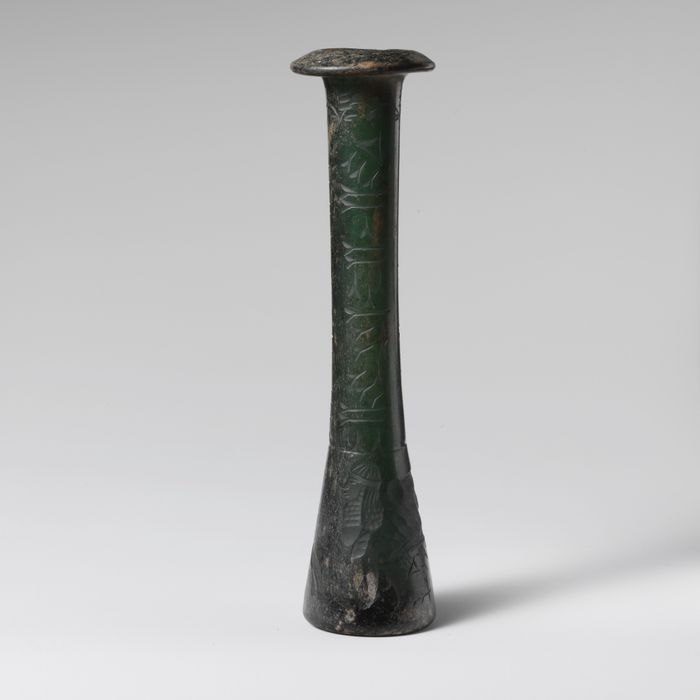
Glass perfume bottle
An item at Metropolitan Museum of Art
Translucent deep green. Thick everted rim, folded out, up, and in, with beveled upper surface and smoothed into mouth; tall cylindrical neck, with fine horizontal tooling indent around base; conical body with straight side; thick, flat bottom with large, circular pontil scar. Neck and body decorated with modern carving: on neck, at top a continuous band of loops and sprays, with three vertical columns of symbols imitating cuneiform extending down length of neck; on body, large winged sphinx, facing left, with lion body and bearded human head, and more symbols below body between front and rear legs. Carving cuts through weathering on surface of glass, indicating that it was done in modern times. Intact, except for slight weathered chip in rim; some elongated bubbles in neck; dulling, brownish weathering, and faint iridescence.
Greek and Roman Art
An exhibit at Metropolitan Museum of Art
The Museum's collection of Greek and Roman art comprises more than thirty thousand works ranging in date from the Neolithic period (ca. 4500 B.C.) to the time of the Roman emperor Constantine's conversion to Christianity in A.D. 312. It includes the art of many cultures and is among the most comprehensive in North America. The geographic regions represented are Greece and Italy, but not as delimited by modern political frontiers: Greek colonies were established around the Mediterranean basin and on the shores of the Black Sea, and Cyprus became increasingly Hellenized. For Roman art, the geographical limits coincide with the expansion of the Roman Empire. The department also exhibits the art of prehistoric Greece (Helladic, Cycladic, and Minoan) and pre-Roman art of Italic peoples, notably the Etruscans.




